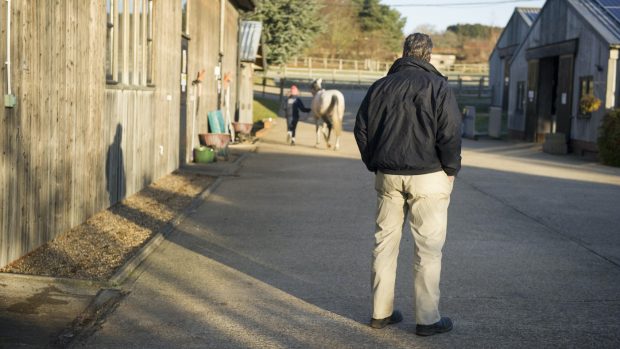Bone pain is an occupational hazard for all athletes. Horses are no exception and bone pain is a common consequence of training horses for fast galloping competition, especially racing. This pain is caused by the bone’s natural response as it adapts to the stresses of training and working at speed.
The racehorse’s bones change dramatically as training progresses in order to support the huge forces sustained by a galloping horse. However, while the bones undergo this transformation, there may be pain and discomfort, which can lead to sore shins, properly known as dorsal metacarpal disease.
Clinical signs
- There may be no lameness, but some heat and pain affecting the front of the cannon bone.
- More frequently, the horse will be mildly lame, although this may appear more as stiffness or shortness of stride, since both front limbs are frequently involved. Almost invariably, heat can be felt in the front of the cannon bones (see above), and the bones will be painful to examine by touch.
- In occasional cases, X-rays may be required, to look for production of new bone on the front of the cannon bone. In severe cases, X-rays may investigate the possibility of fractures on the front of the bone, as a result of of sore shins. Bone scans are occasionally used.
Prevention and treatment
Prevention of sore shins is better than treating them. Once a horse has clinical signs, treatment probably has a limited effect on the course of the disease.
Most cases will be treated by anti-inflammatories either rubbed into the leg or given by injection or by mouth. There are numerous other treatments – mostly involving lotions – that have evolved over generations.
The most important thing is tolimit further damage. The bone has to be given a chance to remodel and repair, and this is best done by restricting fast work. Swimming is useful to maintain cardiovascular fitness while stopping loading of the limbs that would further exacerbate the condition.
How to prevent the condition is controversial. There is no doubt that fast work in itself can increase the risk of sore shins. However, there is now good evidence that horses which do not gallop during training are at a higher risk of sustaining serious limb fractures, so it is vital that we expose them to work at racing speeds.
Researchers in the USA have suggested that horses which undergo regular fast work over shorter distances are less likely to develop sore shins.
They advise that horses should have reduced low-speed work and increased frequency of short-interval high-speed work to reduce the risk of sore shins.
|
To read this veterinary feature in full, check out the 5 June issue of Horse & Hound. If you missed this issue and would like to purchase it as a back issue contact (tel: 020 8532 3628). Make sure you never miss another issue of Horse & Hound by subscribing online NOW and enjoy a discount of up to 30%. Click here to find out more |




